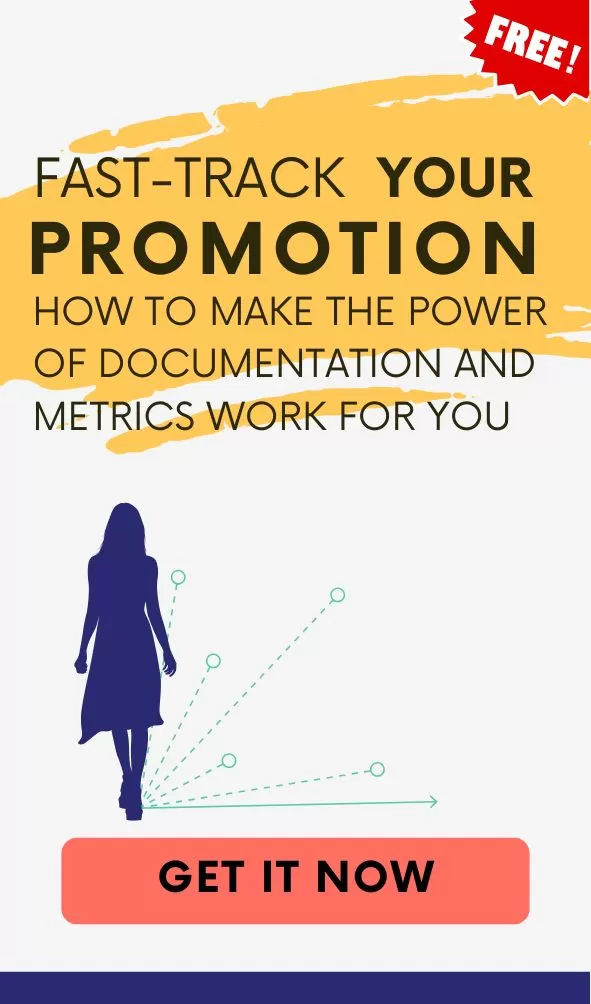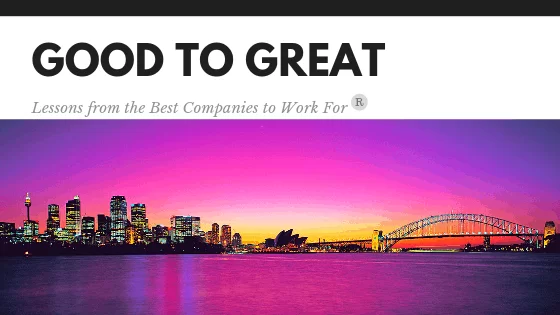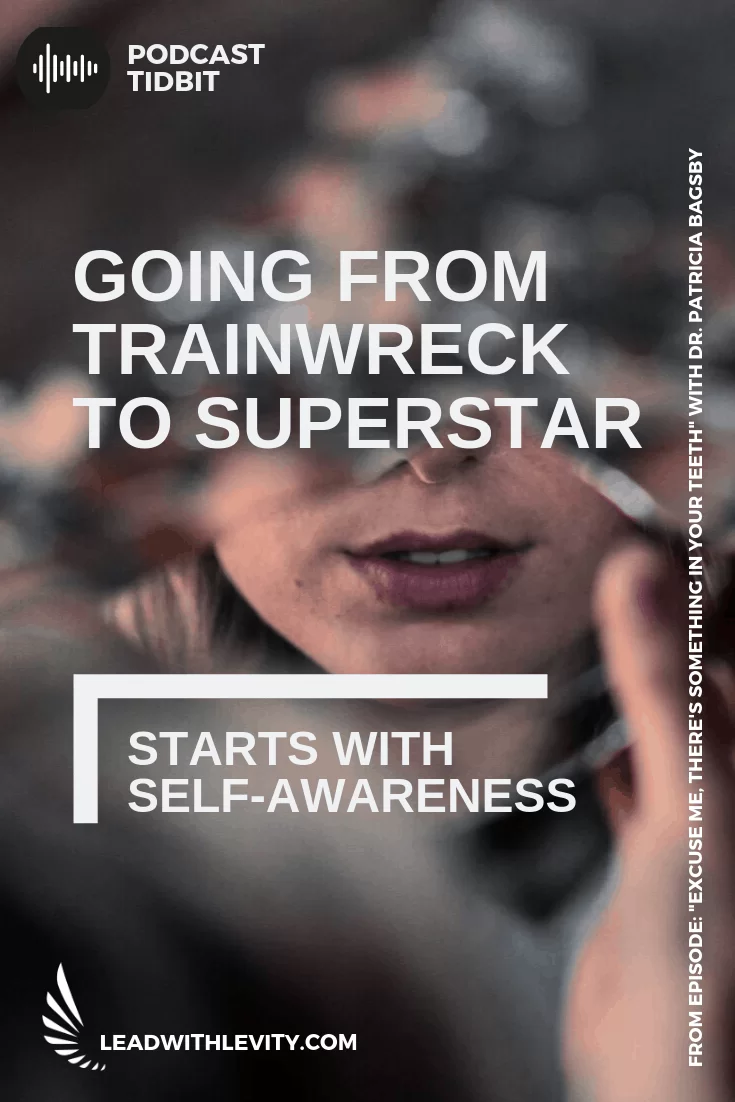I have supported several change management initiatives over the years, and there are 3 things that stick out to me as consistent leadership failures.
- Not communicating throughout
- The first has to do with communication. Leaders believe that everyone knows what’s going on because they sent a long formal email or held a kickoff meeting to introduce the project. People need to know that the project is still a priority so if you are the leader, you need to kickoff the project, but you also need to check-in on a consistent basis and visibly show your support to people at all levels below you.
- Waiting too long to celebrate
- I also see deficits when it comes to reinforcing the performance you want to see. When you enter into a change initiative, there’s naturally going to be some resistance, some hesitancy. People need to be recognized and celebrated when they’re starting to get on board, when they’re making progress, when they’re hitting milestones. Don’t wait until the end to recognize your people–especially now.
- Launching too many initiatives around the same time (i.e., doing too much)
- Which brings me to the last trend that I see which is a one-way ticket to burnout. It’s when companies take on multiple large scale changes at the same time and people don’t have an opportunity to stabilize in between. What does this look like? Leadership announces a new initiative, holds a kickoff meeting, and then 3-6 months later it’s almost like the original project was forgotten completely cause we’re moving on to the next one.
Your people are going through a lot right now. Now is the time for thoughtful change management. Change management is a process to help people understand, buy into, and adopt planned changes. It includes addressing readiness, managing resistance, and creating plans to support communication, reinforcement, and skill development. Companies often forego the people side of change and focus mainly on the technical sides of project management and quality management instead. The problem though is that people need to change and they are the hardest part of the equation to change so we really do need to put more intentionality and resources there.
So guess what, today I’m chatting with a change management consultant to the Fortune 50, Pam Marmon.
Pam Marmon is a change management leader and CEO of Marmon Consulting. She is Prosci certified change management expert and Cornell University certified organizational designer with 15 years of experience and proven success record in implementing organizational initiatives and culture transformations.
Pam has led organizational transformations in the areas of:
- System implementations
- Mergers and Acquisitions
- Organizational restructures
- New operating models
- Process improvements
- Strategic alignments
- Culture transformations
The Interview
Heather Walker:
Welcome to the Lead with lLevity podcast. I’m your host, Dr. Heather Walker and my guest today is Pam Marmon. As a change management leader and CEO of Marmon Consulting, (she’s Prosci certified y’all) she’s also certified through Cornell University for organizational design. She has several years of field experience, and I am looking forward to sharing her message with you today. So Pam, welcome to the show.
Pam Marmon:
Thank you for having me Heather, it’s a pleasure to be here.
Heather Walker:
Thank you so much. Thank you so much. Pam, can you tell me a little bit about your process? Can you walk us through your journey and how did you get to this point where change management is your big focus?
Pam Marmon:
I would love to. I started leading organizations through change when I was in my early 20s, and about a decade ago, and I found myself in a Fortune 50 client, working on a large acquisition and working hand in hand with a consulting firm that provided to the management, and now at that time in my stage of my career, I was fascinated by leadership, and I realized that this change management discipline the space related to organizational transformation provided this ability for me to partner with leaders, learn from leaders and really influence leaders. Now fast forward a decade later, what I’ve come to realize is that the passion that is about leadership has transformed and morphed into the passion about the person, the individual the employee. And that to me is the biggest opportunity for leaders to really influence an organization, when they can relate to the one employee that cares about whatever is relevant in their world and when the leader can reach that one employee, can speak in a way that relates to them–they can experience the greater success for the organization.
Heather Walker:
And how did that shift occur? How did you go from leader to ‘I care about the employee now’?
Pam Marmon:
Yeah, I know it’s funny. I still care about the leader obviously but what I do is I see myself as an advocate on behalf of the employee, because the change will most likely impact employees’ day to day work, and somebody has to speak on behalf of that employee and their voice has to be heard. And so as a change leader coming in as a consultant I have the ability to work with the leadership team as we define the vision and the strategy and the timing of the change. And, I also have the ability and the opportunity to work with the frontline employees who will actually experience change. Because I’m a neutral party I can provide that feedback and that perspective to the leader, so that the leader can be empowered with the right talking points and the right perspective and the right knowledge of what that experience would look like for the employee. What’s really important is that the leader cares, because when a leader cares about that perspective and cares about the employee, the journey is very different. At the end, when we go live with a project or the process or technology, we’ve embedded employees through the journey of this, we’ve engaged the employee we’ve asked for feedback, when they included them in the decision making process to whatever degree appropriate, and we go live with the employee championing the work, versus us just telling them ‘this is happening figure it out.’ So my goal is to really help the employee at the end of the day, that’s my passion. It happens through the leader and certainly my journey initially started at that high level leadership, specifically area, but I quickly learned that if it weren’t for the employee, the leader wouldn’t be successful.
Heather Walker:
Very true so leaders are leaders because of the followers that put them in that position. That’s right. Yeah. What kind of changes have you helped organizations transition through?
Pam Marmon:
Yeah, a lot of the changes are in the technology space. A lot of transformation–digital transformations. A lot of HR changes as well. Systems processes…remote work is a big one right now especially with the situation we’re in with the coronavirus. Okay. Technology process. Operating Model is also another big one where we’re shifting the operating model we’re adding team members, we are expanding our services how we do our services, all of that, leading to a more effective organization at the end.
Heather Walker:
What would you say are the top change management challenges that the business world is facing today?
Pam Marmon:
We are bombarded with content, and with information, and with messages and with requests and with different communication channels. And so I think the biggest challenge that we’re facing as a change from a change management perspective is getting the attention of the individual. And so what I coach, the leaders that I work with, to do is to make sure that you’re aligning your change effort, along with everybody else who’s leading a change effort in your organization, so that you have visibility. As you craft your messages as you deliver that the request to the employees that you’re being mindful of what their experience is like so what’s the story that the employee is receiving at the end. And are there opportunities for you to link those messages with other people throughout your organization, so that there’s a cohesive story that the individual will receive.
Heather Walker:
So, you mentioned that we’re being inundated right now and I would completely agree with you. Do you feel like traditional change management models are equipped to tackle the current challenges?
Pam Marmon:
The days that we are facing right now are very different than the normal standard change management practices that we would apply. I think there’s a lot of relevance to the traditional change management models. What we’re seeing right now is a need for empathy and a human connection and not to say that’s not the case with any change, but I think there’s a high need for us to be able to connect with the individual and to relate to that individual and to be graceful towards that individual in the current circumstances. I think we can do that more effectively when we’re in tune with our organization, with our teams, and our people. And also when we’re being real with that moment, we are being transparent about our situation and the challenges that we may be facing and just allow that humanity to work itself throughout our teams, so that they feel like we’re building onto that trust.
Heather Walker:
Right, right, right. So, considering the traditional models right now…there’s some applicability, but we also need to sort of move out into more empathy, maybe even more empathy than ever before. And I would completely agree with you there especially considering that for most of us when we stepped into 2020 and we picked up our calendars and our goals and we started setting goals shelter in place was never a goal. That was never a part of my 2020 New Year’s resolutions I don’t know about you…
Pam Marmon:
Me either.
And so my advice to leaders would be consider what is the most important thing that you can do from a change perspective with your team and focus solely on that so that you get the results that you want, but you’re not overtaxing your people from a mental capacity perspective.
Pam Marmon
Heather Walker:
So in a lot of ways we’re operating completely outside the land of planned change, right? We’re moving into unplanned change to the point where, in some cases, we don’t even know what the goal is. We just know that we want things to be better and we want to help people through. And do you have any tips for what a leader can do on a day-to-day basis to support their team through this?
Pam Marmon:
Yeah. Empathy certainly is the right mindset to have from a change perspective, my recommendation would be to limit the volume of change. So as much as we can be strategic about implementing the things that truly matter, we are in so many ways in survival mode right now. Many businesses maybe not all, but many businesses are. And so as we think of perhaps all the changes we have planned out for the year, or the next several years, what is the most important one, and or handful of important ones that we can focus on? Because what’s happening…people are reaching this threshold of saturation, but personally at home. This is new. And then at work, entering a new way of working as well. And so my advice to leaders would be consider what is the most important thing that you can do from a change perspective with your team and focus solely on that so that you get the results that you want, but you’re not overtaxing your people from a mental capacity perspective.
Heather Walker:
And you mentioned, I think in your book, “No One’s Listening, and It’s Your Fault,” that email is something that we tend to rely heavily on which it’s, it’s kind of hard right now because now people are living at home and so you’re either relying on email or some kind of text or it’s some form of text communication or maybe video or phone. What would you say is the most effective way to connect with people right now, if we’re not using email?
Pam Marmon:
These days I think a lot of companies are starting to use video conferencing, where you can make that personal connection and you can read verbal cues and physical cues as well from from the person who you’re communicating with. I think that’s really important. Technology is our helper here. It’s not our enemy, and so the comment about email oftentimes what happens is leaders will communicate solely via email. And the reality is that many of us can relate to this, that emails are just piling up, or they’re just going straight into the trash can, and we don’t get to see them or we don’t get to read them, or we just don’t pay the attention that they deserve. And so, as much as possible if we could communicate and engage people through other channels. That would be my recommendation to leaders…not to rely solely on email as their primary way to communicate with people. I know a lot of companies struggle with that because that is a major way of us sharing information within organizations. But as we think of the change there are certain times when email is probably appropriate. But as we talk a little bit more about the day-to-day in fact to the employee, what particularly is changing in their world? The discussion and the dialogue that’s required will greatly benefit everybody at the end.
Heather Walker:
Right, right. Let me take a step back, let’s go back to just general changes as opposed to COVID, how to manage during COVID. So, the people who love to listen to the show are interested in making the kind of work environment that their employees can get really excited about. And going back into the workplace. There are people who are naysayers. There are people who are all about work. Work has to be work. We have to hit our metrics. We have to be productive. For someone who is a levity enthusiast… what recommendations do you have for them to actually champion change– a cultural change, if you will– a climate change? It’s a change of tone in the work environment.
Pam Marmon:
Yeah. I recently had a conversation with a leader, and we were planning out a change in that organization and I said to her. “I’m here to infuse joy.” And she looked at me and smiled and said, Well, we don’t quite know how to do that part. And one way to do that is by intentionally identifying what are the mile markers where we can infuse celebrations or recognitions or just things that will bring the team together, and allow us to, to celebrate and to acknowledge the hard work of the team. So I encourage every leader rather than waiting until the end of some large go live to call out the people who have contributed. What are the mile markers along the way that we can…we can take advantage of and really allow the team to be infused with more energy to be recognized? Sometimes these large transformations take multiple years from beginning to end. And so it’s very important for us as leaders to sense when our people need a little bit of an uplift and to add fun things into the project into the celebration into just how we lead the change itself so that we don’t hit that 15 level. Early in the project rather than being able to carry it through the end.
Heather Walker:
Fatigue is definitely the word of the day right? We’re all feeling it. And if you’re not celebrating big and small wins, you’re really missing a lot of opportunities. And in the meantime, you’re, you’re burning people out so that by the time you get to the end, they may not even be there for you to celebrate all of that good work that they did. So you definitely want to make sure that you’re building in resilience into your team. And one way to do that is to celebrate, big and small. Exactly. Yeah. What is on the horizon for you, Pam?
Pam Marmon:
My mission is to help leaders not be afraid of change. And that is why I wrote the book. I know that the title is catchy there’s actually a story with the title. I was meeting with one of my mentors and he was sharing with me, some of the struggles that he’s having communicating the change within his organization and primarily using email to do that. And before I could catch my words, I said, ‘No one’s listening and it’s your fault’. And now my mentor is somebody who is actually in the military. He’s got a military background, very decorated. And there was this awkward pause where we both looked at each other, and I thought, ‘Oh, no I can’t believe I just said that to him out loud’. And thankfully he smiled and allowed me to elaborate.
That was one of those moments when I realized there is this sense of fear in leaders when it comes to leading the transformation and there’s also the sense of frustration because from their perspective. They’re doing everything they can to make sure that all of these efforts are being implemented. What they didn’t see was the point perspective which is why there’s this really beautiful synergy between leaders and employees. And so what I want to do is to encourage leaders to not be afraid, and my real message is with the proper process change is not hard. There is a process, there is a model that I talked about in the book called L.E.S.S. Listen, Empower, Speak and Solve…and I go into all the details there, but my message that I want to leave with leaders is the first step in that model is listen.
And if there’s anything that we can walk away from this conversation is the importance of us to be good listeners to our people to understand the organization to understand the outcome, because only when we can listen attentively and understand the people that we’re leading through this change. Can we communicate with them, can we relate with them –to them? And so that’s that’s the message that I’m hoping to share with as many leaders as possible. I’m receiving feedback from leaders all over the world who are reading the book, and are positively impacted by the message and hopefully this is a fresh perspective on change. I know lots of people have adapted the mindset that change is hard. And I want to change that. I think that change is a wonderful journey. It is a journey that we as individuals, transform and, and it transforms us but it also provides us an opportunity to make progress in the world, and humanity has relied on progress to be where we are. So I see change as something remarkably beautiful, and the more we can dispel fear, and the more we can adopt this mindset that change is not hard, the better we are as a society.
Heather Walker:
That’s right, that’s right. We can get through it. We can. Yes, we can. Pam I really do appreciate your time today. And if anyone needs to learn a little bit more about this L.E.S.S. model– ‘LESS is more’. If they want to learn more about the model, or they want to get connected to you, where should they go?
Pam Marmon:
Yeah so they can visit https://Marmonconsulting.com. I actually have put together a set of free resources, templates, change management models and communication tools, free checklists…all of that is available to anybody who’s interested in becoming a better leader and leading organizations through change. And they can also connect with me through LinkedIn, I’m happy to be a resource, and a guide if anybody is interested in talking with me about continuing their journey.
Heather Walker:
That’s awesome. Thank you so much, Pam I hope you have a wonderful day.

About Pam Marmon
From Fortune 50 to start-ups, Pam Marmon has broad experience leading transformational initiatives in the aerospace, technology, insurance, healthcare, nonprofit, financial, banking, corporate retail, and professional services industries.
Pam has an MBA from Seattle Pacific University and an undergraduate degree in Business Administration from Calvin University. She has taught as an adjunct professor at Wheaton College. Pam is a speaker and the author of a soon-to-be published book on effectively communicating during organizational transformations, No One’s Listening and It’s Your Fault.
The Lead with Levity podcast is a show for leaders who care deeply about what makes/breaks the employee experience. Our guests are dynamic researchers, practitioners, consultants, and business leaders. We cover foundational elements that are needed to avoid forcing the fun. We also invite lively managers who lead with levity to show us how it’s done. Thanks for joining us on this journey.









